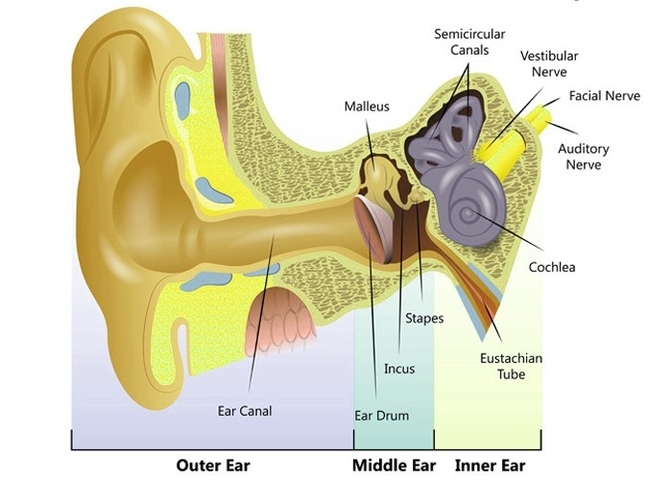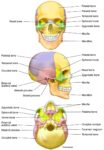The human ear is a complex organ that serves two primary functions: hearing and maintaining balance. It is anatomically divided into three distinct parts: the outer ear, the middle ear, and the inner ear.
Outer Ear
The outer ear consists of the visible portion called the auricle or pinna, which projects from the side of the head, and the short external auditory canal. The inner end of this canal is closed by the tympanic membrane, commonly known as the eardrum. The function of the outer ear is to collect sound waves and guide them to the tympanic membrane.
Middle Ear
The middle ear is a narrow, air-filled cavity in the temporal bone. It houses a chain of three tiny bones the malleus (hammer), incus (anvil), and stapes (stirrup), collectively known as the auditory ossicles. These ossicles conduct sound from the tympanic membrane to the inner ear.
Inner Ear
The inner ear, also known as the labyrinth, is a complex system of fluid-filled passages and cavities located deep within the temporal bone. It consists of two functional units: the vestibular apparatus, which contains the sensory organs of postural equilibrium, and the cochlea, which contains the sensory organ of hearing. These sensory organs are highly specialized endings of the eighth cranial nerve, also known as the vestibulocochlear nerve.
Function
The ear’s primary function is to detect and analyze sound by transduction, which is the conversion of sound waves into electrochemical impulses. It also maintains the sense of balance or equilibrium. The outer and middle ear serve only to conduct sound to the inner ear. The inner ear, on the other hand, is responsible for both hearing and maintaining balance.
Clinical Relations
Various conditions can affect the ear, including otitis (inflammation of the ear), blockage of the auditory (Eustachian) tube, and high tone deafness. Understanding the anatomy and physiology of the ear is crucial in diagnosing and treating these conditions.
In conclusion, the human ear is a marvel of biological engineering, capable of detecting a wide range of sounds and helping us maintain our balance. Its complex structure and function make it an essential part of our sensory system..



